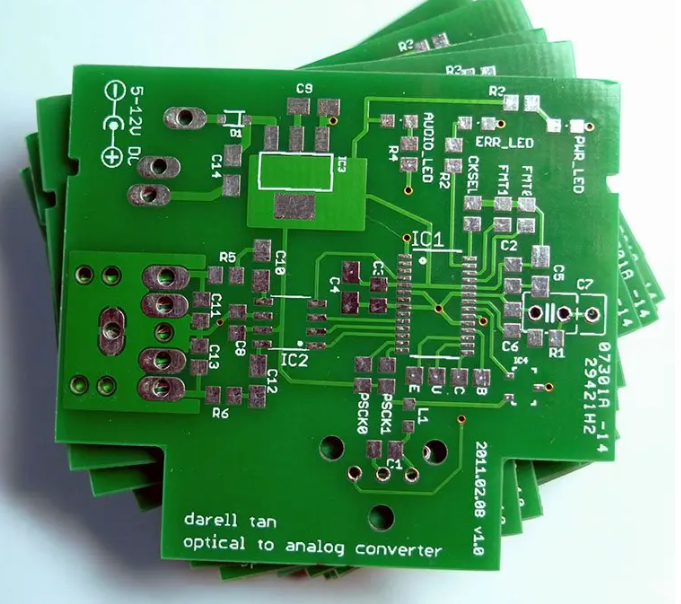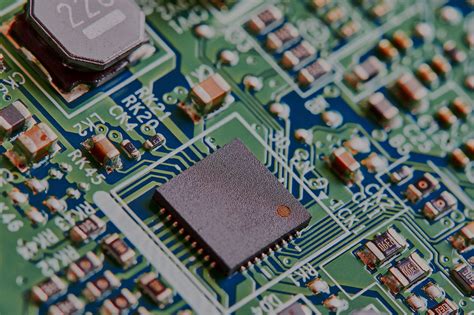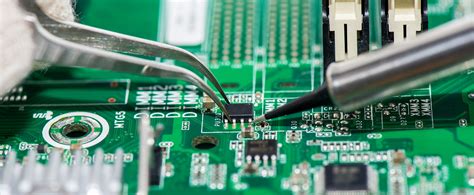PCB Layout Considerations for Split Digital and Analog Grounds
Introduction
In modern electronic circuit design, particularly in mixed-signal systems, proper handling of ground planes is one of the most critical aspects affecting system performance. The separation of digital and analog grounds (often referred to as DGND and AGND) presents numerous challenges for PCB layout engineers. This paper examines the key considerations, techniques, and potential pitfalls when implementing split ground planes in printed circuit board design, with particular focus on routing strategies at the separation boundary.
The Rationale for Ground Separation
Noise Coupling Mechanisms
Digital circuits generate significant high-frequency noise through several mechanisms:
- Switching noise: Rapid current changes (di/dt) during logic transitions
- Ground bounce: Voltage fluctuations in ground reference due to simultaneous switching
- Crosstalk: Electromagnetic coupling between adjacent traces
Analog circuits, especially those processing low-level signals (sensor inputs, audio, RF, etc.), are highly susceptible to this noise. Even millivolt-level disturbances can degrade performance in high-precision analog systems.
Current Return Path Considerations
Digital signals inherently require return currents that follow paths of least impedance (which at high frequencies means the path of least inductance directly beneath the signal trace). When these return currents flow through shared ground planes, they create voltage fluctuations that appear as noise in analog circuits.

Implementation of Ground Separation
Basic Separation Techniques
- Physical Partitioning: Creating distinct copper areas for analog and digital grounds
- Single-Point Connection: Joining the grounds at one carefully chosen location
- Bridge Components: Using components like ferrite beads or 0Ω resistors at the junction
PCB Layer Stackup Strategies
Recommended stackup for 4-layer boards with ground separation:
- Top Layer: Component placement and signal routing
- Inner Layer 1: Split ground plane (DGND/AGND)
- Inner Layer 2: Power planes (may also require separation)
- Bottom Layer: Additional routing and ground pours
Critical Routing Considerations at the Split Boundary
Trace Crossing the Split
When signals must cross from digital to analog domains (or vice versa), several rules apply:
- Routing Over Continuous Plane: The signal should maintain reference to its “native” ground plane throughout its path. For example, a digital signal crossing to the analog section should remain over the digital ground plane.
- Proper Bridge Implementation: If crossing requires reference plane change, implement at the single connection point with:
- Adjacent return vias
- Minimal loop area
- Appropriate filtering if needed
- Differential Signaling: For critical crossings, use differential pairs which are less susceptible to ground noise.
Component Placement Near the Boundary
- Mixed-Signal ICs: Place straddling the split with:
- Digital pins oriented toward digital section
- Analog pins toward analog section
- Proper pin assignment during component selection
- Power Supply Components: Position so that:
- Digital regulators feed digital circuits
- Analog regulators feed analog circuits
- Avoid crossing power domains over the split
Return Current Analysis
For multilayer boards, consider:
- Adjacent Layer Coupling: High-speed signals on layers adjacent to ground planes will couple primarily to that plane
- Image Currents: Return currents mirror signal currents in the reference plane
- Split Plane Discontinuities: Any gap in the reference plane forces return currents to detour, increasing loop area and radiation
Common Pitfalls and Solutions
Problem: Creating Slot Antennas
Cause: Long parallel gaps between ground planes can resonate at certain frequencies
Solution: Keep separation gaps narrow (< 5mm) and avoid resonant lengths
Problem: Inadvertent Coupling
Cause: Traces running parallel to the split boundary can couple noise across domains
Solution: Route perpendicular to the split when possible, maintain adequate spacing
Problem: Stray Capacitance Bridges
Cause: Close proximity of digital and analog ground regions creates capacitive coupling
Solution: Ensure sufficient clearance or intentionally place controlled capacitance at the connection point
Advanced Techniques
Controlled Impedance at the Split
When high-speed signals must cross domains:
- Calculate required trace width for target impedance
- Maintain consistent reference plane spacing
- Use coplanar waveguide techniques if needed
Embedded Split Isolation
For extremely sensitive applications:
- Use buried ground planes with different splits on different layers
- Implement electromagnetic bandgap (EBG) structures
- Create moat structures with guard rings

Verification Methods
Simulation Approaches
- 3D EM Field Solvers: Analyze current distribution and coupling
- SPICE Models: Simulate ground bounce effects
- Signal Integrity Tools: Evaluate cross-domain signal quality
Measurement Techniques
- Ground Impedance Measurement: Use vector network analyzer techniques
- Injection Probe Testing: Evaluate isolation between domains
- Near-field Scanning: Identify unintended coupling paths
Case Studies
Audio Codec Implementation
A 24-bit audio system achieved 110dB SNR by:
- Implementing a “star” ground connection near the codec
- Using separate LDO regulators for analog and digital supplies
- Routing all digital signals away from analog inputs
High-Speed ADC Design
A 1GSPS ADC layout succeeded by:
- Creating separate ground islands for clock generation
- Using buried capacitance for local decoupling
- Implementing microstrip-to-stripline transitions at domain boundaries
Conclusion
Proper implementation of split digital and analog grounds requires careful consideration of current return paths, strategic component placement, and disciplined routing practices. While the basic concept of ground separation appears simple, successful execution demands understanding of electromagnetic principles, signal integrity, and power distribution network design. By applying the techniques discussed—including proper split implementation, careful routing at boundaries, and thorough verification—designers can achieve optimal performance in mixed-signal systems.
The most effective designs often combine:
- Logical partitioning of circuit functions
- Physical separation of noisy and sensitive sections
- Controlled connection between domains
- Comprehensive verification through simulation and measurement
As system frequencies continue to rise and analog resolutions increase, these grounding and routing techniques will remain essential tools for electronic design engineers.







